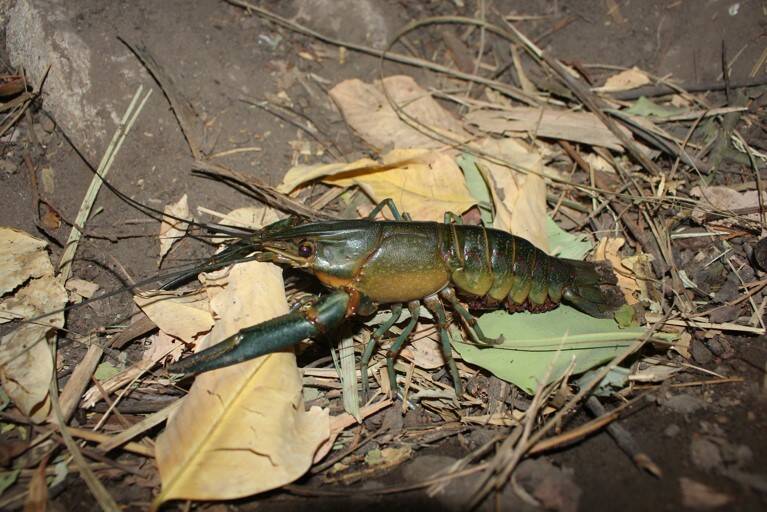
Researchers from the University of Texas Rio Grande Valley recently collected invasive Australian redclaw crayfish in Brownsville.
The finding of three specimens at an apartment complex pond in Brownsville that connects to a nearby resaca confirms an earlier 2013 sighting of a female redclaw crayfish.
This is just the second detection of the species in the wild in the United States, the other location being in California.
UTRGV’s confirmation of both male and female redclaw crayfish in Brownsville means it is likely the species, which can reach a size of up to two pounds, is reproducing.
Australian redclaw crayfish, along with all other members of the crayfish family Parastacidae, are prohibited exotic species in Texas and cannot be legally purchased, sold or possessed in aquariums. It’s also illegal to release these crayfish into a public waterbody, although it appears this is probably what happened.
“Release of aquarium life is unfortunately a key means by which invasive species such as these crayfish are introduced,” said Monica McGarrity, TPWD senior scientist for aquatic invasive species. “Well-meaning, uninformed aquarium owners sometimes release their pets thinking they’re doing the best thing for them, but if they do survive, they can become invasive and harm the aquatic species and ecosystem. Aquarium owners should research alternatives to aquarium dumping and help prevent introductions of the next invasive species.”
TPWD aquatic biologist Dr. Archis Grubh surveyed numerous sites in the area during July and found three additional Australian redclaw crayfish between the apartment pond and a nearby resaca two miles away.
“We don’t know when these invasive crayfish were first introduced or how far they have spread, but we do know they can have a negative effect on local species and biodiversity,” said Grubh.
Finding, or in this case, confirming, the breeding presence of redclaw crayfish is a significant and disturbing discovery. This invasive crayfish species can grow rapidly and breed profusely and can alter native habitat and vegetation to the detriment of native aquatic species.
Invasive crayfish species have caused problems elsewhere. In more than 20 northern states, the rusty crayfish native to the American South has gained a foothold, probably as live bait thrown overboard by anglers.
In Europe, the American signal crayfish was introduced in the 1970s as a commercial product after European crayfish were decimated by disease. The signal crayfish quickly escaped into local waterways.
Sightings of Australian redclaw crayfish should be reported to TPWD by emailing photos and location information to [email protected].




